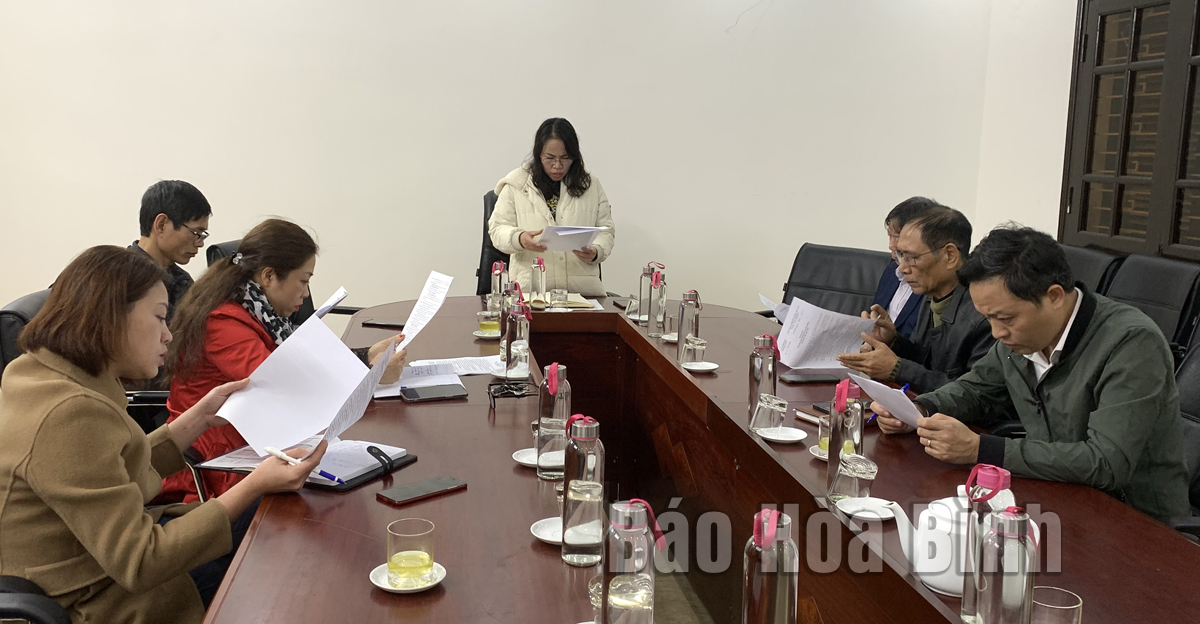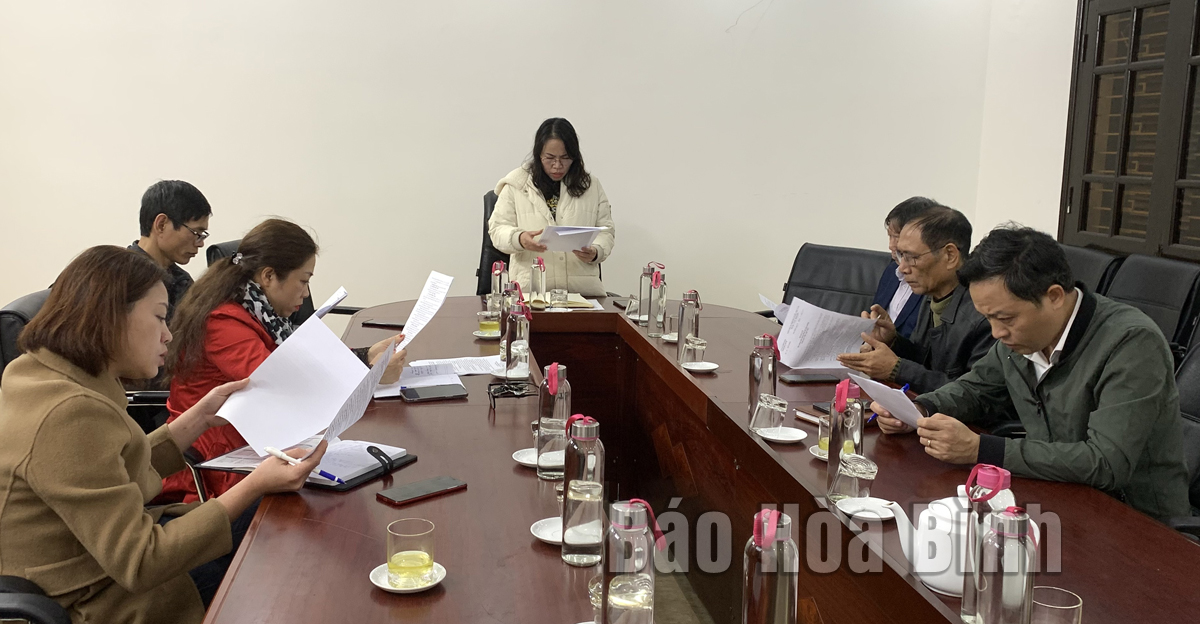



The delegates are discussing the content of building the symbol of the antelope to celebrate the Lunar New Year, 2023.
According to the plan, the symbol of the antelope is installed at Hoa Binh Square. The front face is the Cat family gathering to welcome spring (including 9 cats: the father cat, the mother cat and 7 kittens) which are lively, playful and happy together. The two sides and the back are the clusters of secondary symbols, showing the culture of Hoa Binh homeland such as: the symbol of Can alcphol Lam rice and the clusters of fortune symbols welcoming spring, the yellow cat, the stylized decorative cat... The main part in front is the welcoming gate, the clusters of spring flowers and the two sides of the wings are the clusters of the models of the stylized Cat, creating a joyful image to welcome the New Year with 2 sets of shape letters "the joyful Tet - Quy Mao spring. Besides, there is a photo exhibition with the theme "Hoa Binh Homeland”.
The construction period from December 25, 2022 to January 16, 2023. The display period is from January 16, 2023 to the end of January 31, 2023 (December 25 of the Year of the Tiger to the end of January 10 of the Year of the Rabbit). The ribbon-cutting ceremony is expected to take place at 3:30 p.m. on January 14, 2023 (December 23 of the Year of the Tiger).
Based on the assigned plan and tasks, the relevant units are urgently developing the detailed plans so that the construction and installation of the symbols can be ensured according to the plan. Thereby, it creats a joyful and exciting atmosphere to serve the people to enjoy the spring and celebrate the national traditional New Year. It also creats a tourism highlight, attracting tourists to Hoa Binh city and Hoa Binh province on the occasion of the Lunar New Year, 2023.